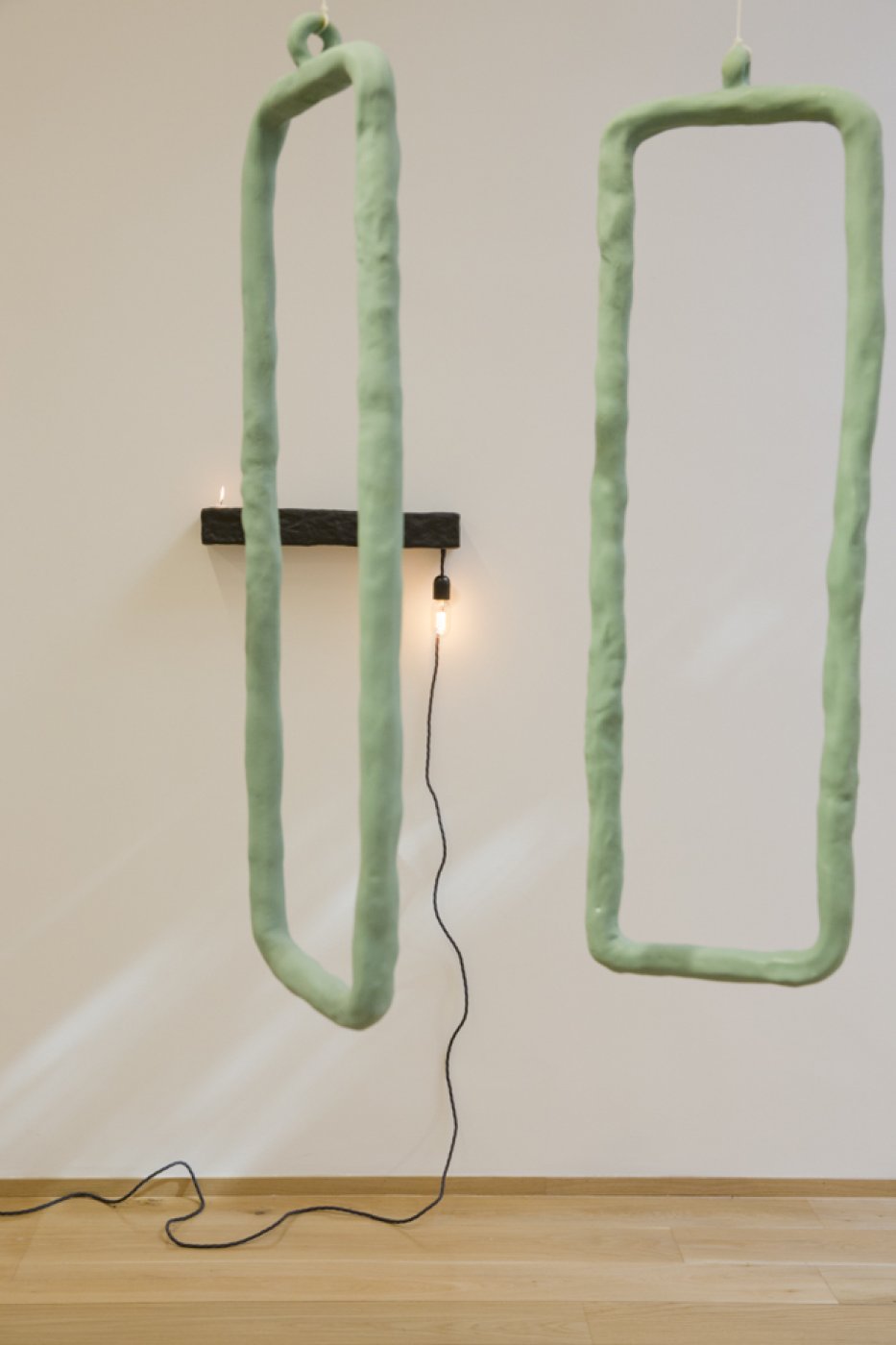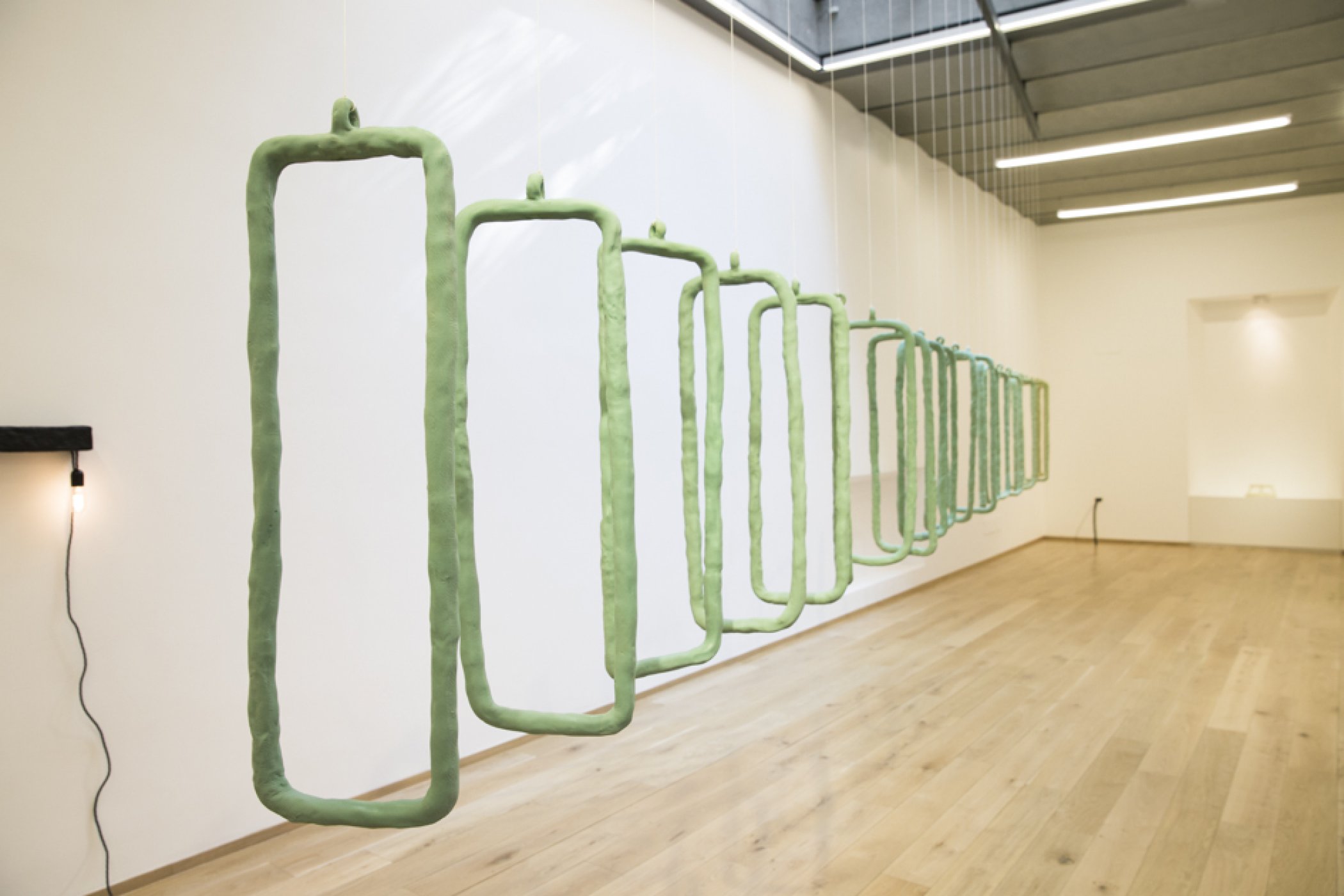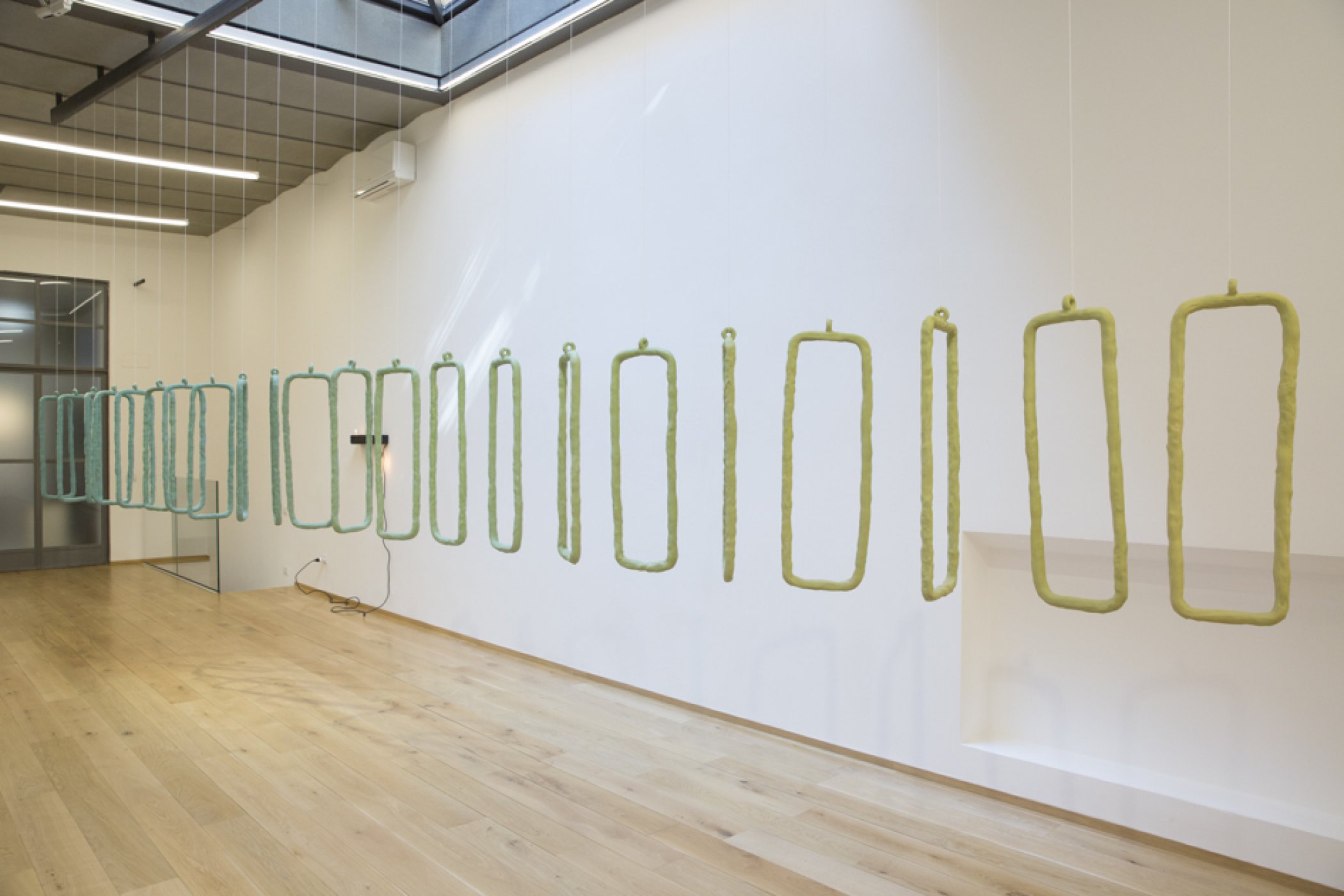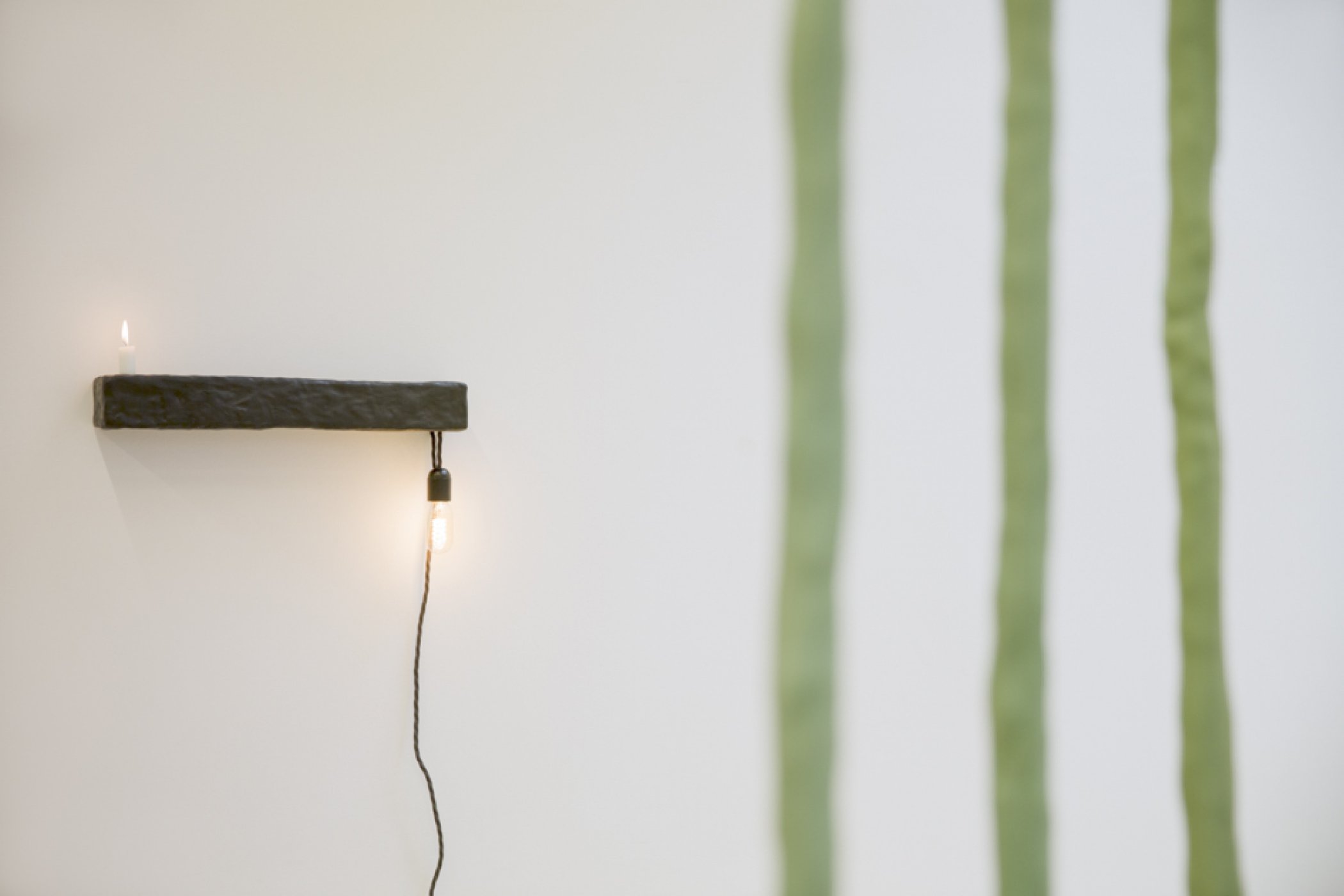Anders Ruhwald. The thing in your mind.
Officine Saffi, Via Aurelio Saffi 7, 20123, Milan.
14 April – 22 June 2018
Opening reception: Friday 13 April 2018, 6.30pm
14 April – 22 June 2018
Opening reception: Friday 13 April 2018, 6.30pm
From 14 April to 22 June, Officine Saffi is proud to present The thing in your mind, first solo Italian exhibition of Anders Herwald Ruhwald, designed for two separate venues: Officine Saffi (Milan) and Casa Museo Jorn (Albissola). The title and concept are linked to the definition that Ruhwald prefers for his sculptures: “site-sensitive” objects that trigger conceptual reflections in the viewer, setting off chains of memories, desires, cognitive illusions and false tautologies of the images, starting from entirely novel relationships that objects have with the environment and the architecture. The works on show at Officine Saffi are part of a research into the conventionality of supports and anchors. The bodies (sensitive surfaces, controlled tensions) live in relation to the architecture according to certain “behaviours” that seem to be reiterated and assimilated by the objects used in our daily life - on the wall, like light switches; hanging from the ceiling, like light fixtures; on the ground, like chairs; in a corner, like windows - recreating a kaleidoscope of non-existent functions, reduced to mere tensions between forces, presences in the space. As such, the pieces entitled “Holder”, “State”, “Prop (it is OK)” and “Between” contribute to our reflection on the identity of household equipment, in a dialogue between object, artwork and design. Ruhwald’s sculpture is minimalist in origin, made his own through the juxtaposition of different materials in the same space (wood, metal, fabric, ceramic, and elements of architecture and design). In this syntax of signifiers, ceramics and the environment take on a dominant role, characterising the phenomenology of the works.
Anders Herwald Ruhwald is one of the one hundred artists included in the Phaidon book Vitamin C(2017), a publication which, similar to the previous volumes dedicated to other topical themes in contemporary art, presents a “global survey of 100 of today’s most important clay and ceramic artists”. There is no doubt that Ruhwald does not need this form of recognition to be considered one of the most interesting artists on the international scene. Among the many qualities which characterise his artistic career, we could highlight his ability to explore the shifting forms of sculpture in relation to the environment, at the same time stimulating a conceptual process tied to the semantic disorientation and alienation of the viewer, provoking a meditative process. With respect to the legacy of previous artistic currents which have undoubtedly influenced the work of Ruhwald (above all minimalism), it is always characterised by an aesthetic of form and colour which lies between the voluptuous and the scatological. His education in both his native Denmark and London have most certainly influenced his career, as has his permanent move to the United States, to Detroit, where he directed the Ceramics Department at the Cranbrook Academy of Art.
It could therefore be affirmed that these are reflective sculptures and environments, in that the otherness mediated by Ruhwald’s objects is a projection of our senses, which have been accustomed and domesticated for centuries to interact with codified references: the domestic environment, furnishings, the function (be it utilitarian or aesthetic) of the object, the architecture. I
t is thus that the vast hanging installation “The shades about to fall”, on show at Officine Saffi, blocks the usual path within the exhibition space and brings into question the concept of borders. The installation requires our experience to be activated, not (only) in a kinetic and perceptive sense, but also a mental one, through our questioning of the bodies in the space. The surface of the bodies is the boundary that Ruhwald works on - the point of contact (physical, visual, perceptual) between us and the world. It is a sculptural score that the artist likes to call “site-sensitive” to underline the fact that he is not aiming to transform the space, but rather to intercept our perception and definition of it in a process of semantic shift.Anders Herwald Ruhwald is one of the one hundred artists included in the Phaidon book Vitamin C(2017), a publication which, similar to the previous volumes dedicated to other topical themes in contemporary art, presents a “global survey of 100 of today’s most important clay and ceramic artists”. There is no doubt that Ruhwald does not need this form of recognition to be considered one of the most interesting artists on the international scene. Among the many qualities which characterise his artistic career, we could highlight his ability to explore the shifting forms of sculpture in relation to the environment, at the same time stimulating a conceptual process tied to the semantic disorientation and alienation of the viewer, provoking a meditative process. With respect to the legacy of previous artistic currents which have undoubtedly influenced the work of Ruhwald (above all minimalism), it is always characterised by an aesthetic of form and colour which lies between the voluptuous and the scatological. His education in both his native Denmark and London have most certainly influenced his career, as has his permanent move to the United States, to Detroit, where he directed the Ceramics Department at the Cranbrook Academy of Art.




